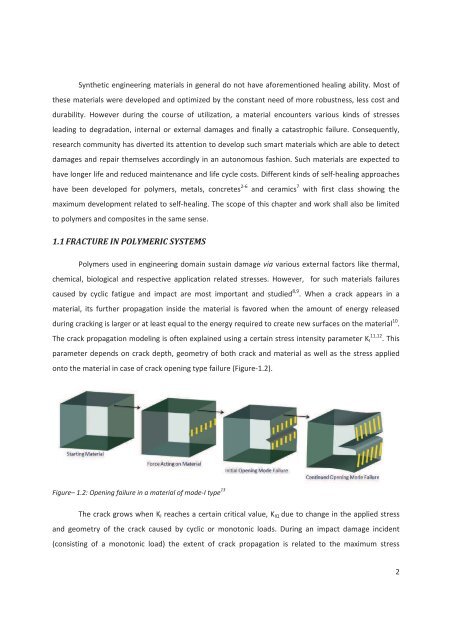4(%3)3 - Ecole nationale supérieure de chimie de Montpellier
4(%3)3 - Ecole nationale supérieure de chimie de Montpellier
4(%3)3 - Ecole nationale supérieure de chimie de Montpellier
You also want an ePaper? Increase the reach of your titles
YUMPU automatically turns print PDFs into web optimized ePapers that Google loves.
Synthetic engineering materials in general do not have aforementioned healing ability. Most ofthese materials were <strong>de</strong>veloped and optimized by the constant need of more robustness, less cost anddurability. However during the course of utilization, a material encounters various kinds of stressesleading to <strong>de</strong>gradation, internal or external damages and finally a catastrophic failure. Consequently,research community has diverted its attention to <strong>de</strong>velop such smart materials which are able to <strong>de</strong>tectdamages and repair themselves accordingly in an autonomous fashion. Such materials are expected tohave longer life and reduced maintenance and life cycle costs. Different kinds of self-healing approacheshave been <strong>de</strong>veloped for polymers, metals, concretes 2-6 and ceramics 7 with first class showing themaximum <strong>de</strong>velopment related to self-healing. The scope of this chapter and work shall also be limitedto polymers and composites in the same sense.1.1 FRACTURE IN POLYMERIC SYSTEMSPolymers used in engineering domain sustain damage via various external factors like thermal,chemical, biological and respective application related stresses. However, for such materials failurescaused by cyclic fatigue and impact are most important and studied 8,9 . When a crack appears in amaterial, its further propagation insi<strong>de</strong> the material is favored when the amount of energy releasedduring cracking is larger or at least equal to the energy required to create new surfaces on the material 10 .The crack propagation mo<strong>de</strong>ling is often explained using a certain stress intensity parameter K 11,12 I . Thisparameter <strong>de</strong>pends on crack <strong>de</strong>pth, geometry of both crack and material as well as the stress appliedonto the material in case of crack opening type failure (Figure-1.2).Figure– 1.2: Opening failure in a material of mo<strong>de</strong>-I type 13The crack grows when K I reaches a certain critical value, K IQ due to change in the applied stressand geometry of the crack caused by cyclic or monotonic loads. During an impact damage inci<strong>de</strong>nt(consisting of a monotonic load) the extent of crack propagation is related to the maximum stress2











